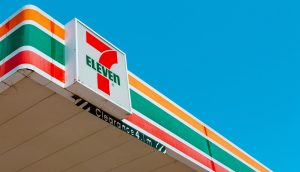MEDIA | SILVER

This story was originally published in the 2023 fall issue of strategy magazine.
IPG Mediabrands CEO Shelley Smit loves how no day is quite the same in the media industry.
“The challenges we’re solving for today are considerably different than those three to five years ago,” she says, with privacy laws, Bill C-18 and other regulatory concerns coming into play. So how does the agency keep up?
Data and technology are a big part of UM’s USP. “We have a huge data stack, but it’s not just about the size, it’s about knowing how to harness its power, and use it in different ways to solve business challenges.”
Just like data, AI, according to Smit, will be gamechanging, but it won’t be a full solve. “If you don’t have the understanding of the marketplace, the ability to break down a client’s challenges, the insights and the ability to bring all that together,” then it won’t be of value to anyone.
As an agency under the IPG Mediabrands umbrella, UM is privy to many tools and technologies, but so too are many other agency players out there. The difference, Smit says, is in how UM harnesses it all.
“We look at it two ways,” says Erica Kokiw, EVP of digital at UM. “Internally, it’s about how we are going to leverage AI to accelerate our already-strong foundational processes, audience strategy and advanced analytics.” More specifically, UM uses it for efficiencies like crunching large datasets on audience strategy. Externally, it’s about identifying where AI “could potentially help our clients when it comes to particular business challenges.”
While data and tech fuels innovation, it’s easy for agencies to want to grasp all the latest and greatest tools. That’s why UM built its “90-9-1” framework, Smit says. It’s designed to map out which tools, technologies, and areas to focus on and invest in.
“Every year, we look at all the existing and emerging technology at a global level, and then calibrate for Canada,” Kokiw says, adding that they map it along two axes: where consumer attention is going, and the advertising opportunity that the platform/tech offers.
The 90% (of the “90-9-1” rule) are investments made in established platforms, like Meta and Google, Kokiw says. “Then the 9% [is technology or platforms that] have some consumer attention, with a smaller amount of advertising opportunity. Augmented reality or Snapchat are good examples because there is consumer attention there, but the opportunity is more niche than, say, [paid] search,” she says.
“The 1% are media futures. Those are areas where we’re starting to hear some noise, and consumers are starting to interact, but it’s not obvious what the advertising opportunity is,” Kokiw adds, pointing to artificial intelligence and the metaverse.
It’s that framework that led to innovations like Shoptimizer, a retail budget allocation and optimization tool that simplifies commerce planning while maximizing ROI. It was launched in August of this year, and has fueled UM’s ability to be more effective in the retail media space. Shoptimizer was developed globally, but the agency fuels it with data from Canada so that it can manage investment performance across the increasing number of retail media networks (RMNs).
“We are operating in walled gardens for the most part,” Kokiw shares, noting that there is typically very little visibility into the performance of RMNs. “Shoptimizer is our answer to that, giving clients the ability to look at their holistic omnichannel investment, and where they should be moving dollars for the best results.”
The agency also uses planning tools, such as Growth Accelerator and Futurecaster, and has access to data (via Acxiom and Kinesso) to identify trends and sentiments. For client BMO, for instance, the agency discovered that “young consumers are fed up with the inauthenticity of their brand relationships… Brands need to invest in living and breathing the experience of their customers more diligently.” The result was “Rainbow Deposits,” a global program where consumers could “deposit” a rainbow they saw during last year’s Pride Month, in exchange for BMO donating $1 to Rainbow Railroad, up to $50,000.
“Our most successful work over the past year has been born out of our desire to push beyond the boundaries of any individual brief,” Kokiw says. And while UM’s tools and tech drive innovation, it’s the agency’s culture that makes both Kokiw and Smit aware that “nothing good ever happens in a vacuum. Our best work has been born out of true collaboration between client and agency stakeholders alike who feel brought in on a shared vision for the campaign. Relationships drive our success.”
New Business
Irving Tissue, Fanduel, H&M, Longos, Tourism Australia, New Balance, Thermacell, Dyson, FarmBoy, Activision, Bank of the West (US)
Offices
Calgary, Montreal, Toronto
Staff
346
CASES

1. Better mental health. For the Canadian Men’s Health Foundation’s Movember campaign, UM challenged male cultural conventions and encouraged men to embrace self-care. The campaign normalized not being the “Greatest of All Time,” instead promoting being the “Decentest of All Time,” using media and partnerships with Rogers Sportsnet and TikTok to share sports icons’ mental health experiences and the significance of self-care.

2. For Boston Pizza’s “Powered By Fanalytics” campaign, UM used fan data and real-time game outcomes to enhance the fan experience during the 2023 NHL playoffs. It turned every touchpoint into a real-time experience, connecting with fans through digital OOH and localized connections.

3. UM and BMO combated rainbow-washing during Pride Month with “Rainbow Deposits,” a campaign that partnered with Rainbow Railroad to create a web app that turned rainbows in the wild into $1 donations for the cause. A media campaign, influencers and Pride events amplified the initiative, transforming rainbows into active support symbols for the 2SLGBTQ+ community.























